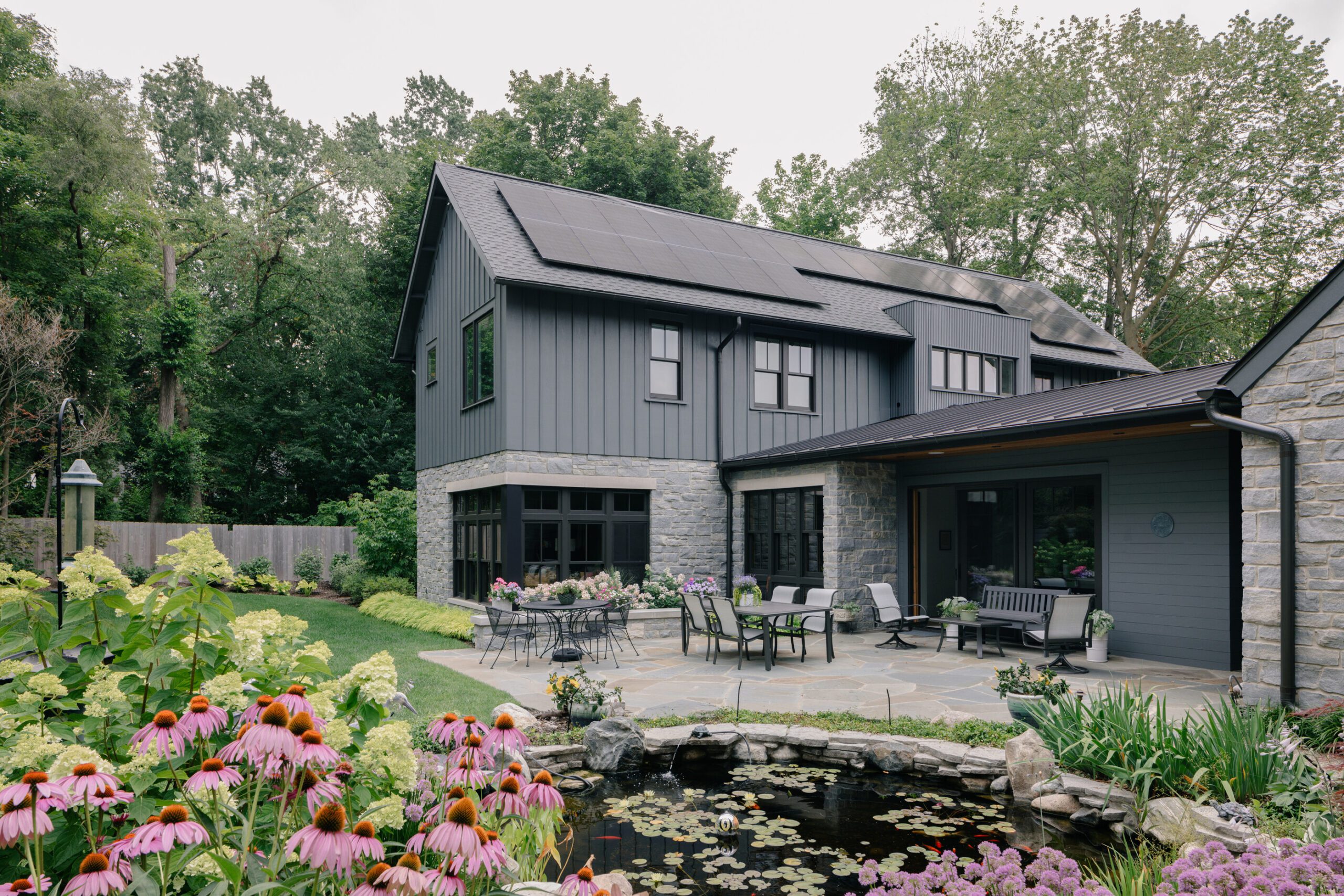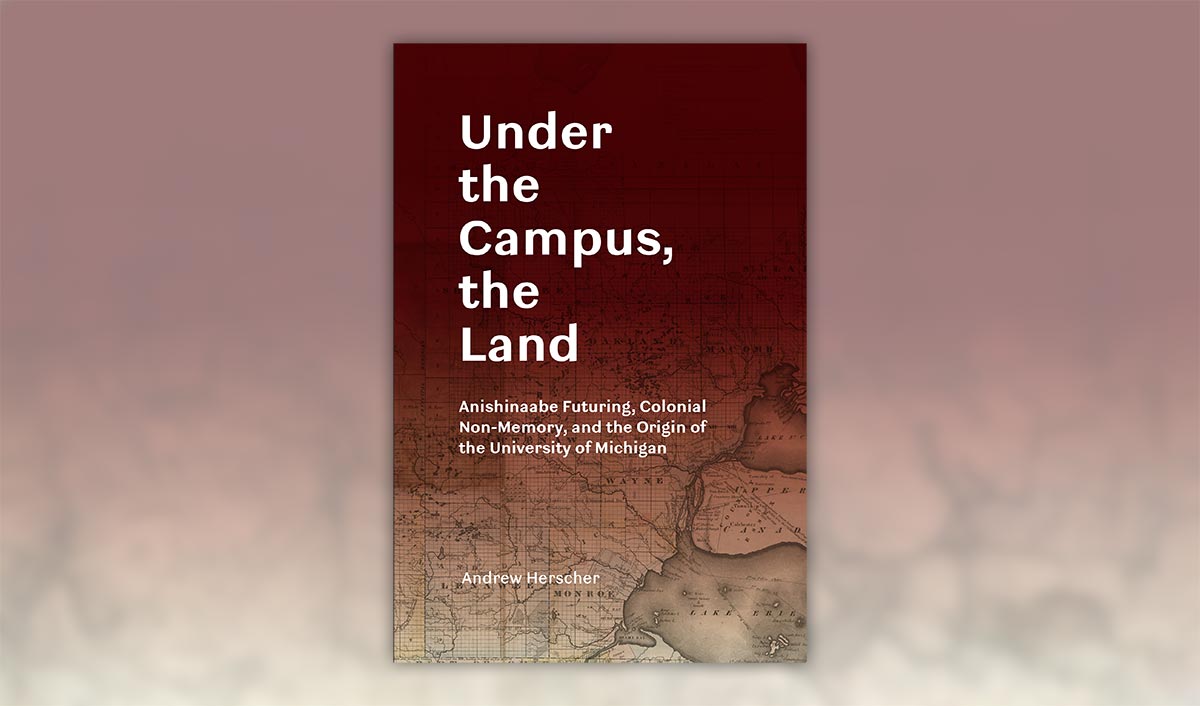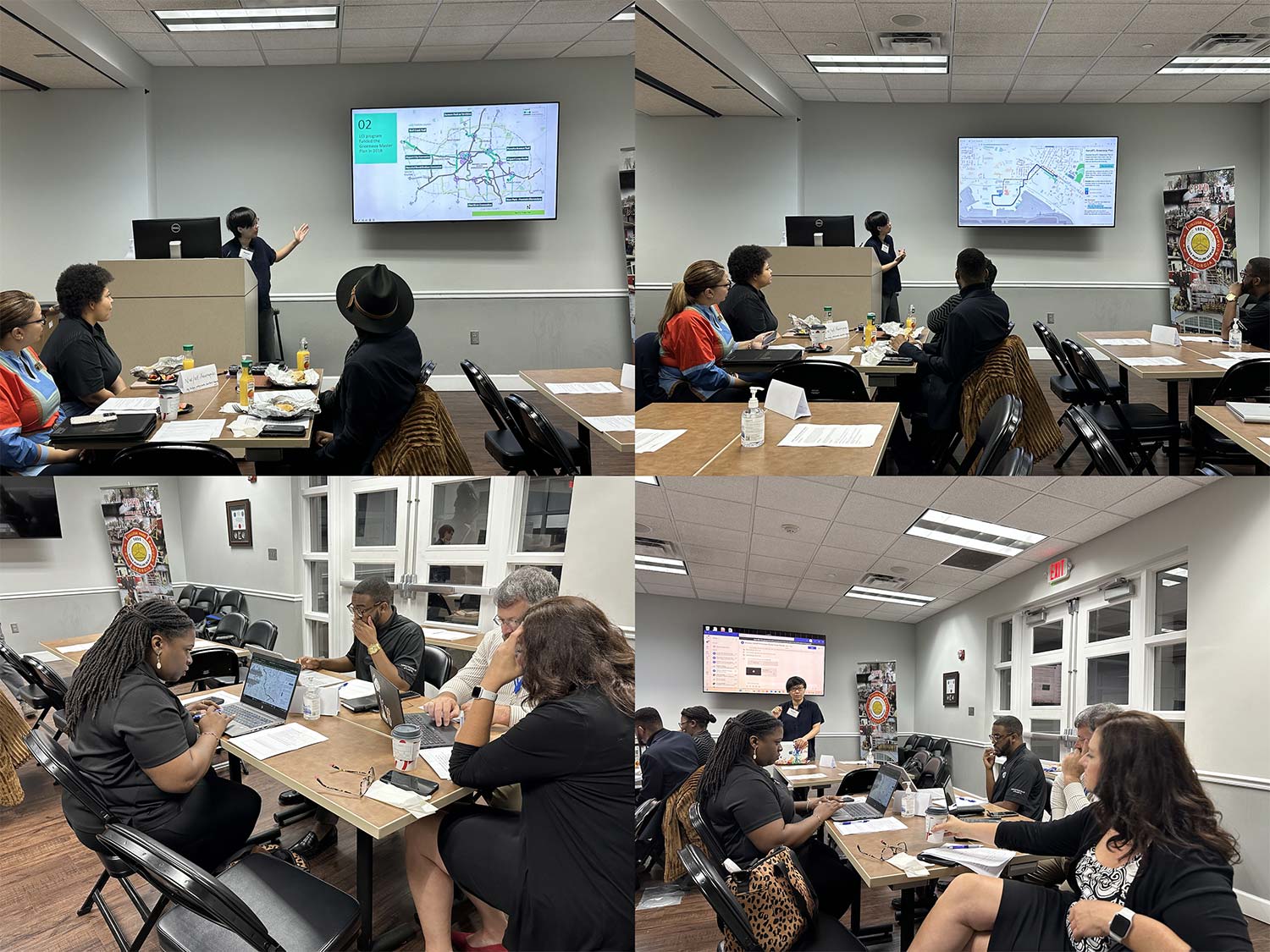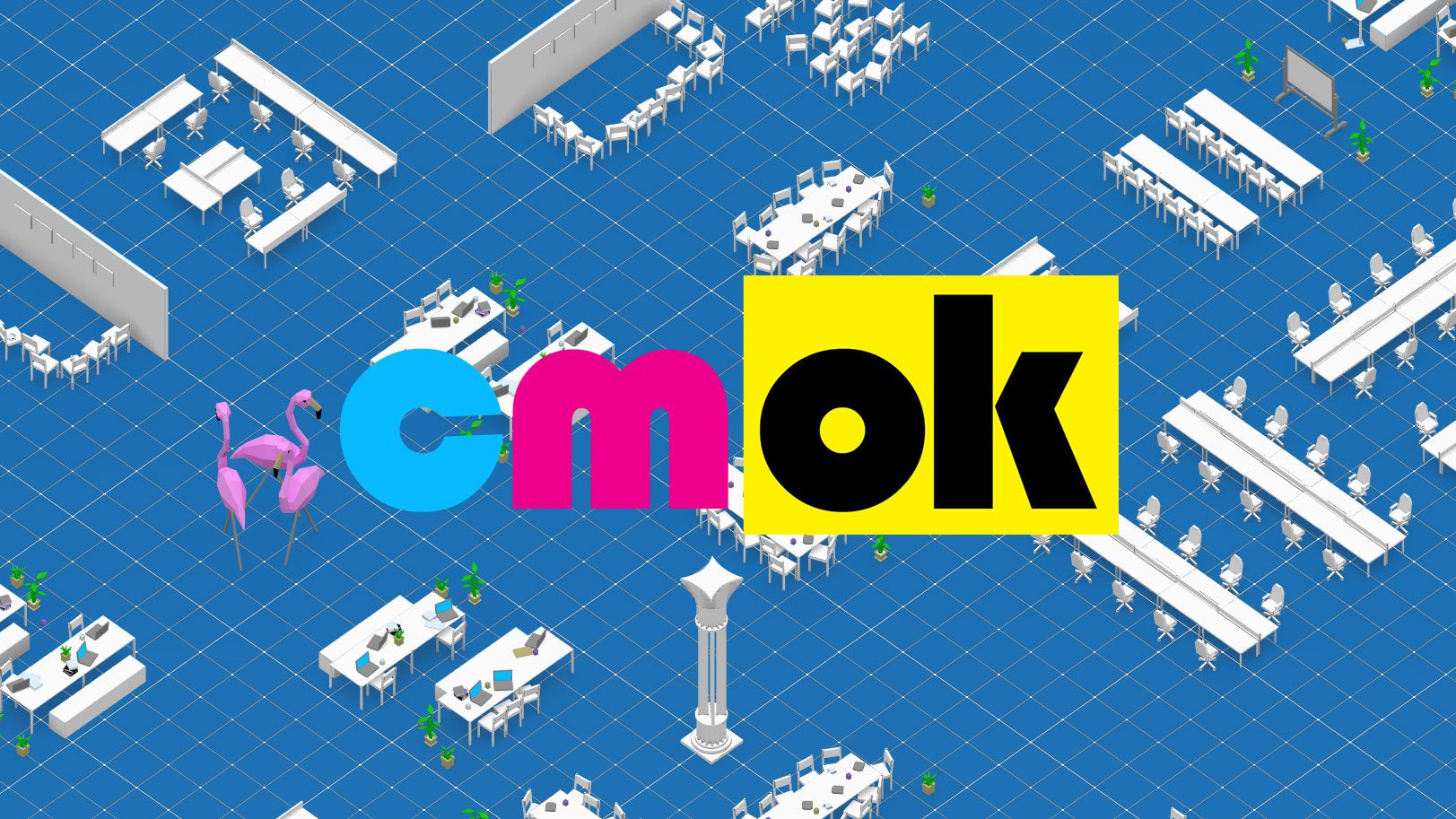
Taubman College’s Innovative Online Platform Creates Virtual Studio Culture
One of the foundations of Taubman College’s architecture program is its studio culture. So when COVID-19 forced classes online and closed the doors of the Art and Architecture Building weeks before the end of the winter semester, faculty and staff were faced with how to replicate the camaraderie and collaboration of the studio, as well as the up-close-and-personal nature of final reviews, in a virtual space.
Shortly after starting the shift to online teaching and interaction, a group of Taubman College faculty and staff initiated a pilot for a web portal that would assemble and then create awareness of and access to the variety of digital spaces in which the Taubman College community was gathering, teaching, and sharing — from pinups and reviews to galleries and conversation spaces.
A few weeks later, the platform formally launched as CMOK, an experimental digital space for the myriad virtual happenings at Taubman College. The letters, pronounced as an acronym, refer to the CMYK third-floor review space, one of Taubman College’s primary meeting spaces, and render a hopeful message: “SEE-EM (I’M) – OK.” Associate Professors John McMorrough and Julia McMorrough came up with the title as a way to create empathy in the space between the real and the virtual.
“In an age of COVID-19 constraints, we conceived the online site as a digital platform that aims to create a new space of connectivity, community, energy, intellectual cross-pollination, and serendipitous social encounters that are characteristic of the Taubman College architecture studio and commons spaces,” said Kathy Velikov, an associate professor of architecture who was part of the group leading the effort.
Added Anya Sirota, associate dean for academic initiatives: “CMOK reminds us to flip the narrative on social distancing by focusing on the upside of ‘Social Instancing’ — another term for which we thank the McMorroughs — through virtual spaces where we can connect more instantaneously.”
Velikov and Sirota agree that the connection provided through the collaborative process of creating the site was one of the greatest takeaways of the experience.
“The group came together, not only to respond to pressing technical needs, but to position design at the nexus of social experience,” said Sirota. “The outcome is both playful in its idiosyncratic references to people and symbols in the college and meaningful in its disciplinary commitment to space as the site of serendipitous encounter and intellectual exchange. It is an instance when design gets ahead of available technology, co-opting existing tools, and illustrating architecture’s adaptive capacities. And all of the knowledge necessary from conception to implementation was available at the school and deployed over a mere few weeks.”
By leveraging web rendering technology combined with map-like operability, at first pass, the website seems to have more in common with games than collaboration platforms. Users can pan through the virtual “city” of objects, furniture, and follies to see what is happening at Taubman College; they also could drop in to active studio webinars to hear the conversation or follow the links to website galleries. Each object presents the opportunity to join a different part of the Taubman community and participate in the work they are doing.
“In many ways, the modular and dynamically sortable space is a kind of calendar app. However, CMOK gives the Taubman community something that calendars and emails cannot: a restored sense of place,” said Velikov and Oliver Popadich, M.Arch ’18, a Chicago-based designer, software developer, and engineer who served as lead designer for the site. “At a time punctuated by grids of floating heads, the website grounds our interactions in an engaging and accessible way. Moving through the site’s landscape, you get a sense that another big thing is happening just around the corner, and are invited to partake in the buzz at Taubman College.”
After graduation, Popadich had continued as a research assistant working with a number of faculty, so when the need for the platform arose, they thought of his design capabilities. The design of the site became a collaboration between Velikov; Popadich; and two Master of Architecture students, Claire Shue and Danrui Xiang.
“One of Taubman’s greatest strengths is the supportive community it fosters. The energy and creativity of the CMOK collaboration provided something new and exciting — a distraction from world events and a chance to reconnect and focus on the amazing work of our students,” said Popadich.
During final reviews for both undergraduate and graduate programs in April, CMOK hosted the usual mix of faculty, students, and guest reviewers, but it also offered outsiders a glimpse into the review process. Several M.Arch thesis reviews had 60 to 80 attendees listening in, while the Thesis Super Jury had 456 unique logins. Other reviews were live streamed via Facebook for an even broader reach.
Taubman College alumni were among the attendees, and “it was really heartening to be able to connect across spaces and timezones that way, and to see the graduates still involved and interested in the work at the college,” Velikov said.
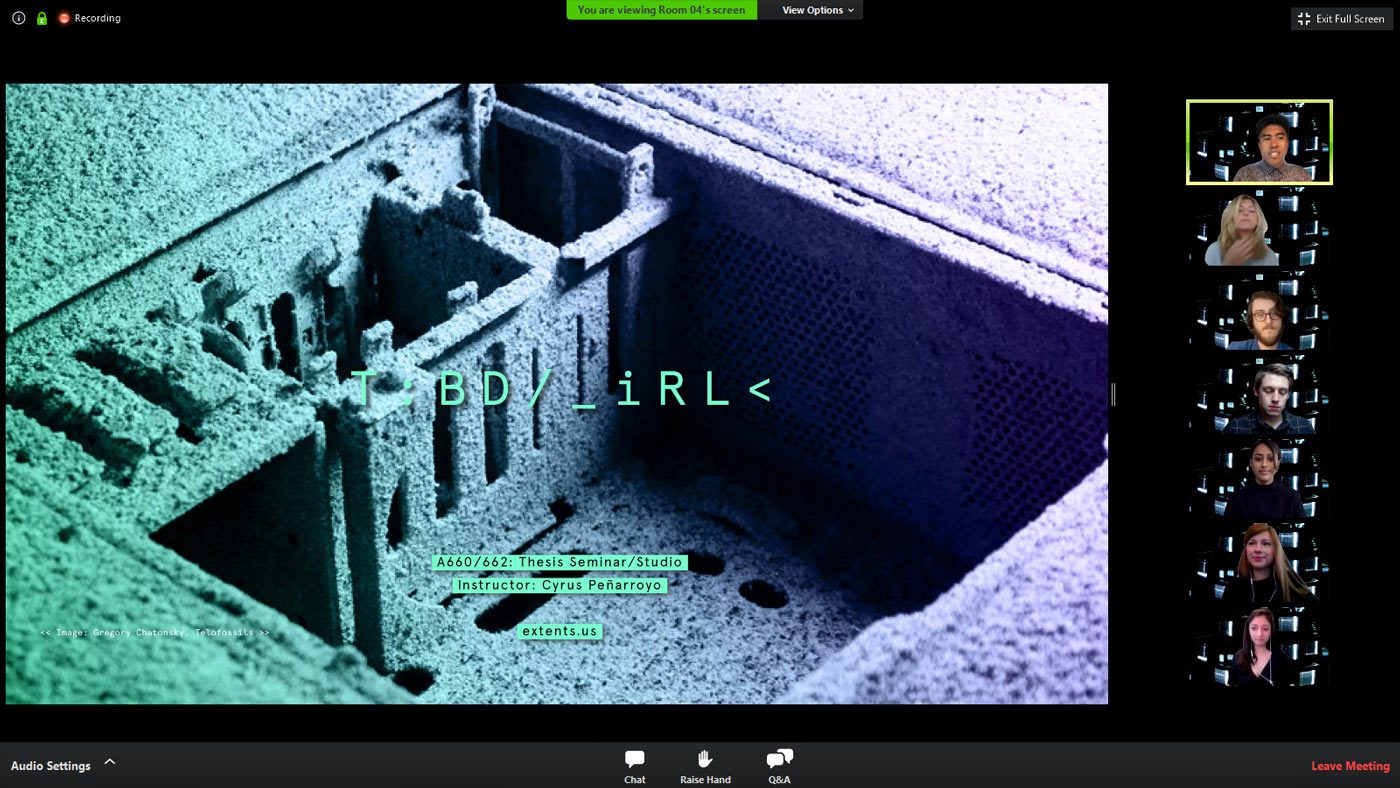
Beyond observing, alumni and other online participants also engaged students and reviewers, said Cyrus Peñarroyo, an assistant professor and coordinator of the thesis studios. “For my own final review, some attendees congratulated the students and posed additional comments or questions via chat. One of my students mentioned that her cousin in India saw her review; I know a few parents tuned in, and I saw a few recent grads in the attendee list, as well.”
In addition to alumni and students’ family members, Associate Professor Perry Kulper also noted “names I recognized from the admissions process, names in the U.K. that I recognized from my Instagram account, many students from other schools who were undergrad mates with some of my students, and I think a former boss of one student observed from India. The students I worked with, and with whom I have had informal conversations, enjoyed the format, the ability to have others access their work on the website, and the ability to attend the reviews, no matter where they were.”
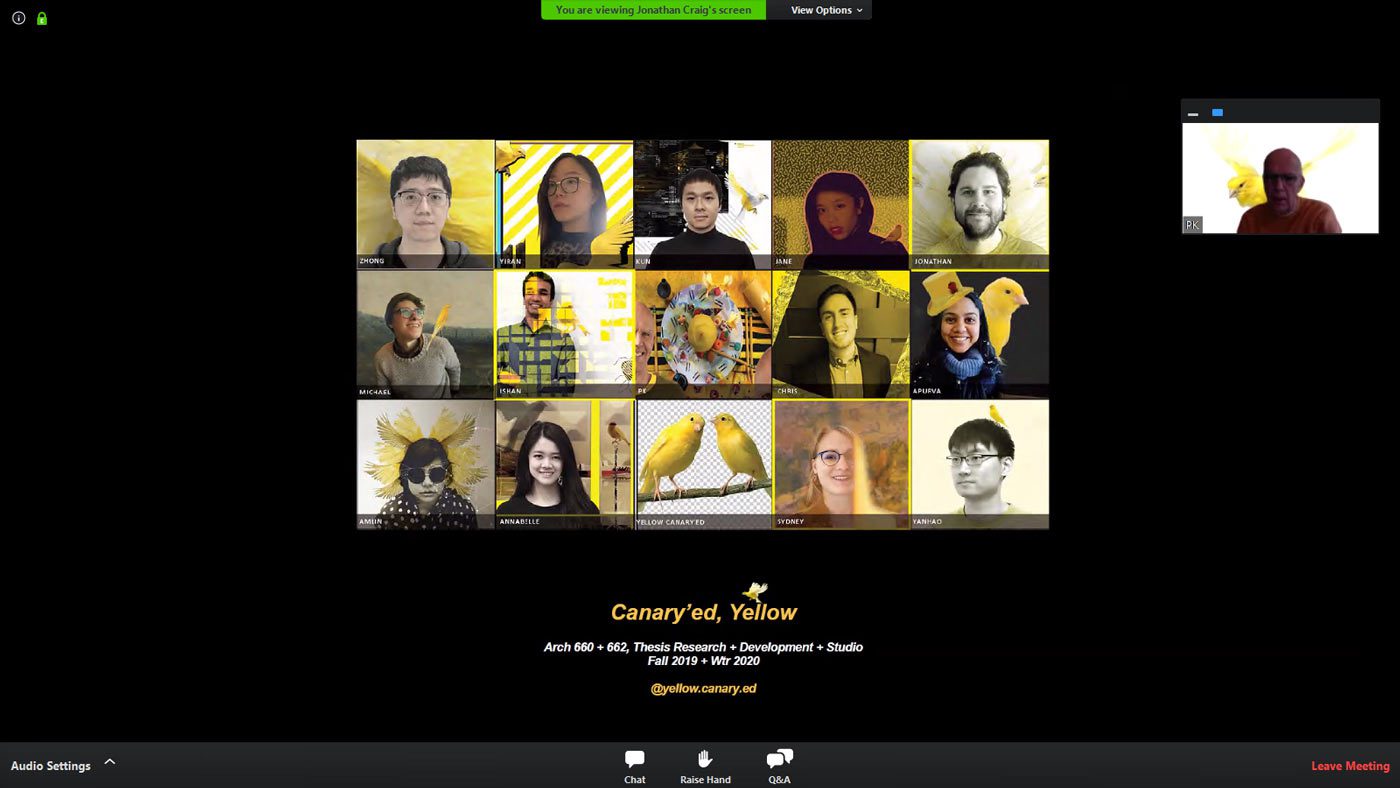
Peñarroyo said that even though the online format pushed students to think differently during a stressful time, they rose to the challenge: “Instead of aspiring to the typical pinup, my students took on the challenge of reformatting their work for the screen/the internet by creating websites, videos, and other forms of interactive content that could ‘live on’ after the review.”
CMOK is one of several ways that Taubman College quickly pivoted as the severity of the COVID-19 pandemic took hold in Michigan in early March. Less than a week after classes moved online, the college hosted its annual Career Fair in a virtual format. Soon after, the college welcomed hundreds of admitted students from around the world to virtual preview weekend events. In early April, the annual Student Show moved online, attracting nearly 20,000 visitors in its first week.
While all agree that they look forward to reuniting in the physical studio, CMOK demonstrates what is possible and how technology can enhance architecture education. As one example, the University of Michigan’s Office of Tech Transfer is working with Taubman College to develop future partnerships with industry to scale and replicate the platform for a breadth of institutional and academic applications.
“In general, I think it’s great that the work of our students and faculty extends beyond the walls of the college and that more people can see what we’re up to — the diversity and range of ideas and approaches. I also appreciate that the review can assume more forms when virtual — in some cases, it can be a bit more elastic and engaging,” Peñarroyo said.
Dean Jonathan Massey said the pandemic has accelerated the need to deliver architecture education in ways that are not only resilient in times of crisis but also lower barriers to entry for a diversity of talented students — and he is excited by how innovations like CMOK can be adapted in the future: “Of all the coronavirus slogans and memes now circulating, Don’t go back to normal is the one that is motivating me as we chart a new path for teaching and learning at Taubman College. Our goal is to move from emergency remote instruction to resilient teaching, which sustains the imaginative discovery and peer-to-peer exchanges that enrich the design studio, but discards the challenges that traditional architecture education poses for many of our students — current and prospective.”
Additional support that was vital to the CMOK collaboration came from Laura Brown (Program Assistant), Amy Horvath (Graphics Specialist), Bill Manspeaker (Information Technology Manager), and Jeremy Nelson (U-M Center for Academic Innovation).





